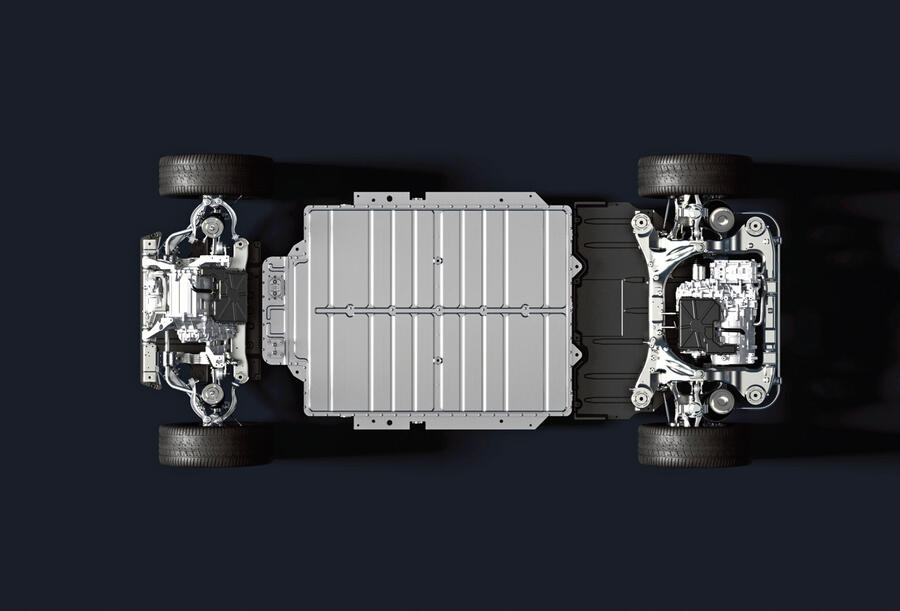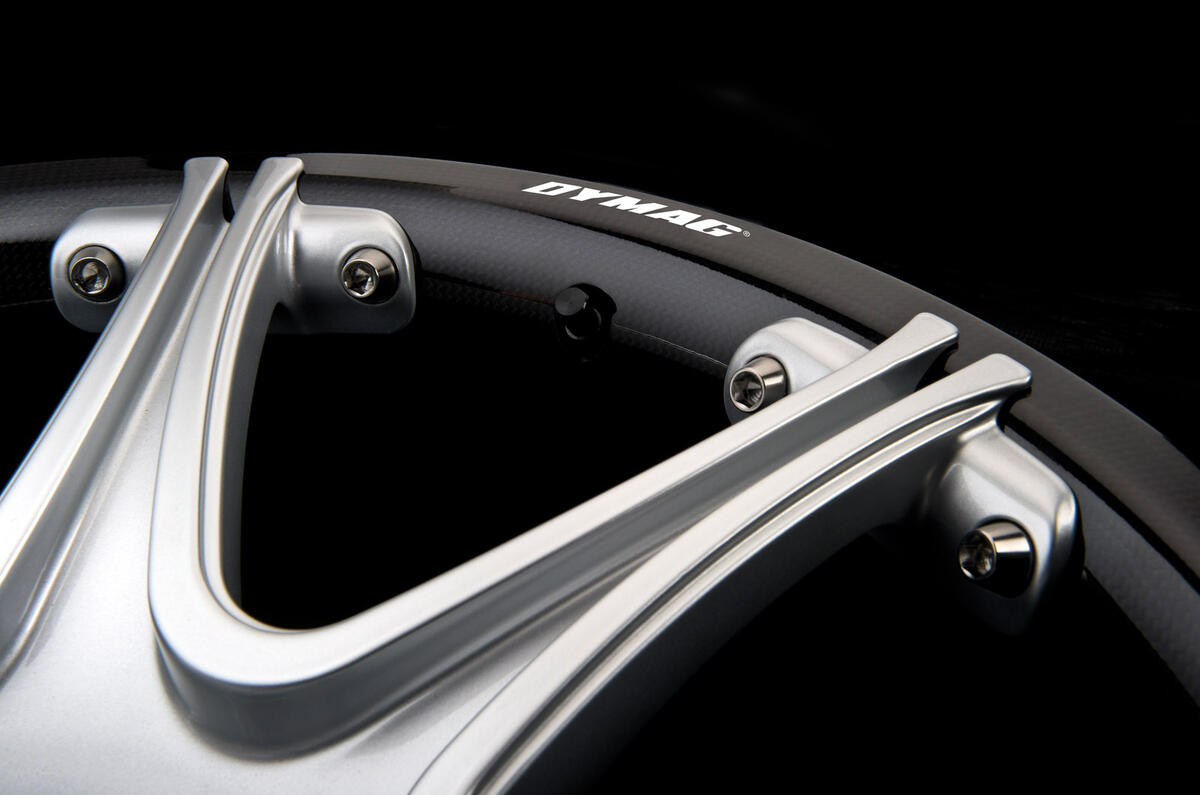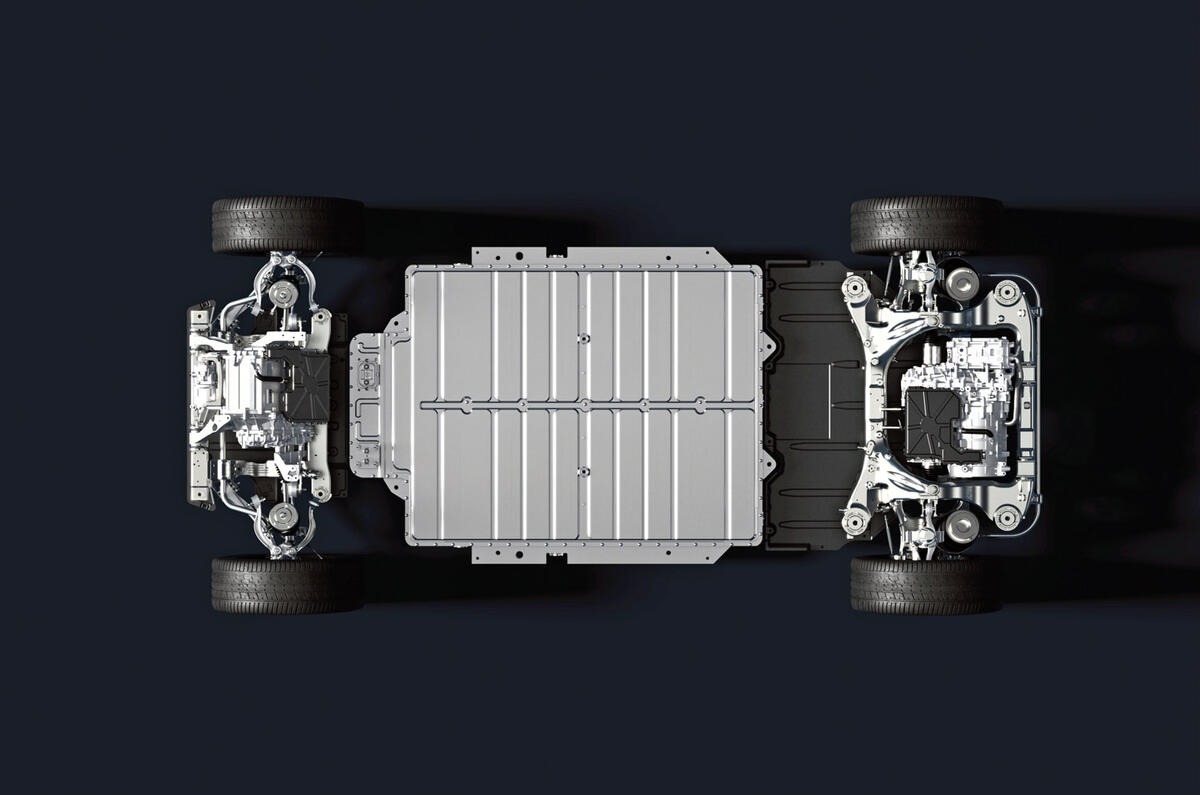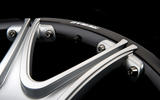If a car on 20in rims is travelling at 300mph, the wheels will be spinning at roughly 3800rpm depending on the profile of the tyre. At that speed the centrifugal forces acting on the rim and in the tyre are huge, and the heavier the wheel and tyre assembly, the bigger they get. Think of those playground roundabouts. Hanging off the outside of one is fine when it’s rotating lazily, but when the big kids turn up and spin it like a top, it’s hard to hold on.
Wheels for ultra-fast cars, like the SSC Tuatara, which set a new world record for a production car of 282.9mph, need to be as light as possible. Specifically, the rims need to be light and strong. Back in the day, the material of choice for racing wheels was magnesium alloy, much lighter than the aluminium alloy used for conventional road-going wheels. A lighter wheel has less inertia, making it easier to change direction as well as reducing unsprung weight.
UK firm Dymag, which supplied the Tuatara’s 20in wheels, was founded in 1975 and became known for magnesium wheels on rally (the Group B MG Metro 6R4 was an early example), F1, Paris-Dakar, Le Mans and Indy 500 cars, to name a few. Its latest BX-E and BX-F wheels are a hybrid of magnesium or alloy hubs and spokes, which are developed by the company’s American partner, Forgeline, and Dymag’s rim or ‘barrel’, to which the centre sections are bolted. An advantage of hybrid wheels, as opposed to all-carbonfibre (monoblock) wheels, is that the alloy centres conduct away the heat generated by heavy braking.
The rims are capable of withstanding a simulated kerb strike of 684kg as well as coping with the forces generated at warp speed. The complete wheel weighs just 9kg and is tremendously strong. The tyre well (the area around the centreline of the rim) is the most highly stressed area of any rim and where most stress fractures happen.
In a £10 million development programme over four years, Dymag worked with the National Composite Centre to analyse exactly where the load was carried. The final design spreads the load and means the rims can take a strike that might shatter conventional alloys. The outer edges of the rim, supporting the tyre bead, are hollow with a foam filling the void, creating a sacrificial area to protect the tyre and adding stiffness to the rim.
The rim is made using the resin transfer moulding process, where the carbonfibre is compressed in a mould and resin injected under high pressure. The carbonfibre itself is a triaxial (multi-directional) fibre, which drapes nicely in the mould. Dymag worked with partners to develop ultraviolet-stable resin systems and a clear, high-quality finish.
Both the resin systems and the finishes can withstand the high temperatures generated by brakes on track. The laying up of the carbonfibre in the mould is done by hand, but the process lends itself to automation. The cost is in supercar territory today, but Dymag expects that would bring the cost down through economy of scale, eventually allowing fitment to sports cars in the £40k-£50k bracket.








Join the debate
Add your comment
As long as there a market for Car accessories, Wheels especially, then, the company's that produce them will come up with designs and new tech to make them better, more appealing, the must have, and I agree, most supercars don't get to travel at Supercar speeds, they have to drive at the same speed as you and I, but, a flash set of Wheels makes you feel good, and that to an extent is what matters.
What they really mean is that 24-35 inch wheels are now possible as the spinning forces are back to what they would be on normal alloys. Expect larger wheels and tyres and/or more space to put a bigger electric motor.
I believe this wheel weight issue to be totally irrelevant to the Industry other than from a racing perspective.
I think the highest speed limit in any country on the planet is around 80 mph - Germany has unrestricted areas when roads are dry, but here traffic precludes sustained high speed for very long.
Most Super cars capable of (in theory) super speeds - drive in procession nose to tail around Monaco, L.A. or Knightsbridge, revving their nuts off and frying their clutches in 1st and 2nd gears, rarely getting above 80 mph.
So forgive me if I dont see the benefits of crazily priced Carbon wheels. At least with an alloy wheels you have the chance of spotting a cracked rim.....carbon rarely reveals flaws in its finish.